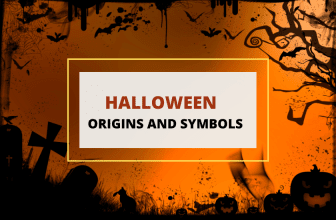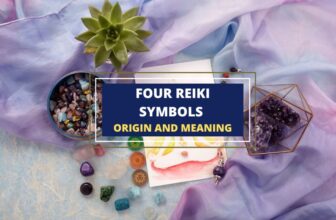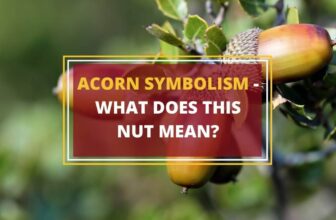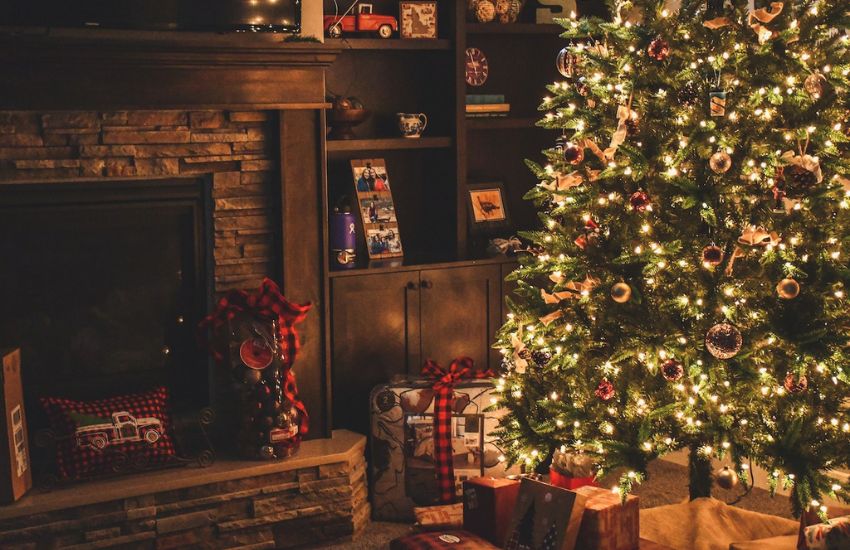
Table of Contents
Christmas isn’t just about gifts and feasts; it’s adorned with symbols that carry rich stories and traditions. From twinkling lights to the evergreen tree, each symbol holds a special meaning. Let’s take a look at the history and significance of some of the most popular symbols of Christmas.
1. Christmas Tree
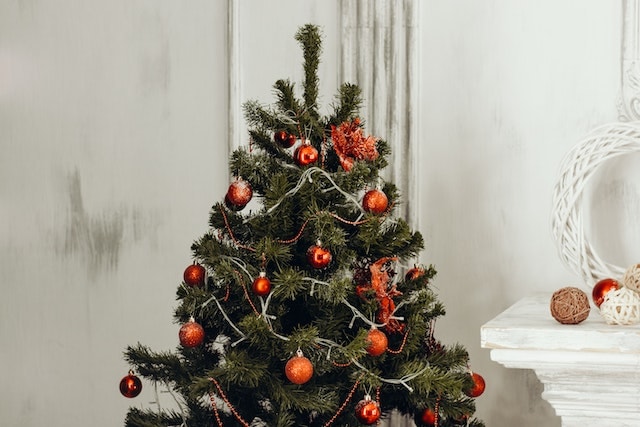
The Christmas Tree’s origins trace back to ancient civilizations, long before Christianity, where evergreens symbolized life during winter. For Christians, the tree came to represent the eternal life Jesus offers.
By the 16th century, Germans had embraced the tradition of bringing trees into their homes during December, decorating them with candles. This tradition spread across Europe and later to America.
Over time, the decorations evolved from edible treats and candles to baubles and lights. Today, the Christmas Tree isn’t just a religious symbol but also a universal sign of the festive season and the warmth of family gatherings.
2. Star of Bethlehem
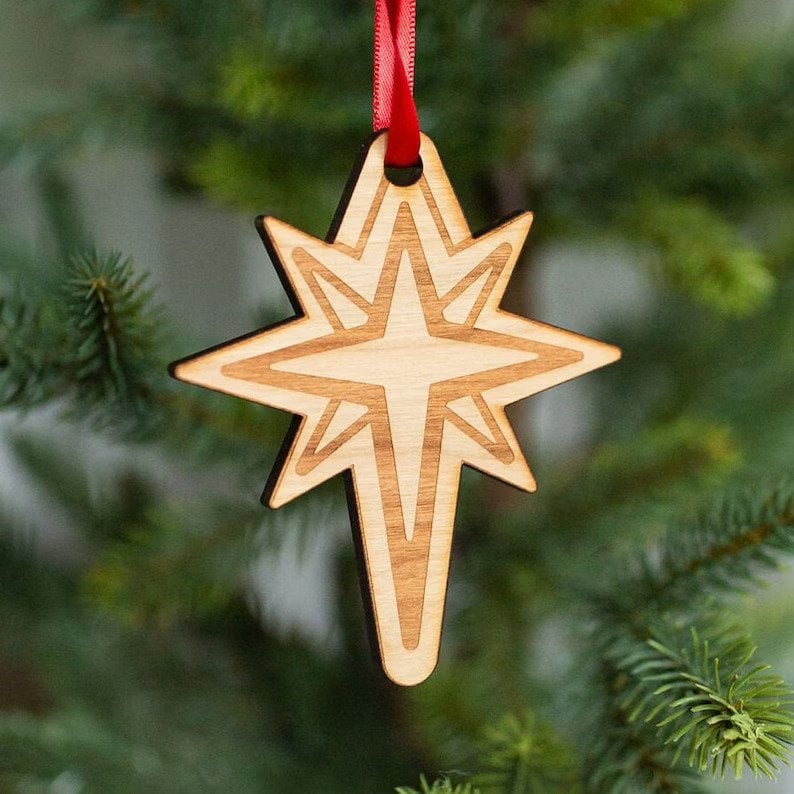
The Star of Bethlehem is often placed on top of Christmas trees to symbolize the star that guided the Three Wise Men to the birthplace of Jesus. It represents guidance, hope, and the divine nature of Jesus’ birth.
Many have long wondered if the Star of Bethlehem was a comet, two planets coming close, or something miraculous. Regardless of what it really was, its meaning for Christmas stays the same: it’s a sign of hope and marks an important moment.
3. Nativity Scene
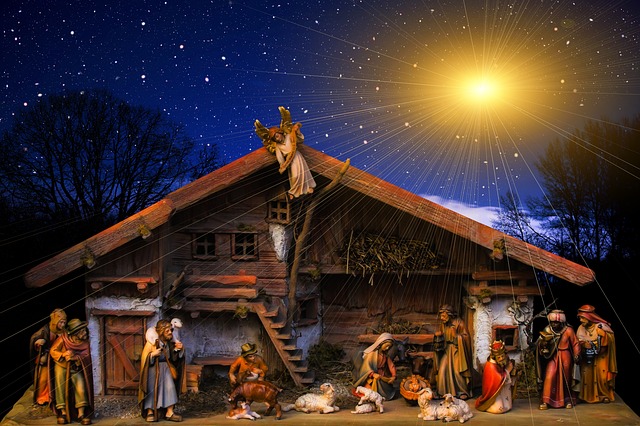
A vital symbol of Christmas, the Nativity scene represents the birth of Jesus Christ, showcasing figures like Mary, Joseph, the baby Jesus, shepherds, the Three Wise Men, and also animals.
The Nativity Scene started in 13th-century Italy with St. Francis of Assisi to show the simple birth of Jesus. Now, it’s a worldwide tradition. Putting up the Nativity at Christmas reminds us of the holiday’s religious meaning. In many homes and churches, it’s a focal point of decorations, showing the holiday’s spiritual side among the festivities.
4. Angels
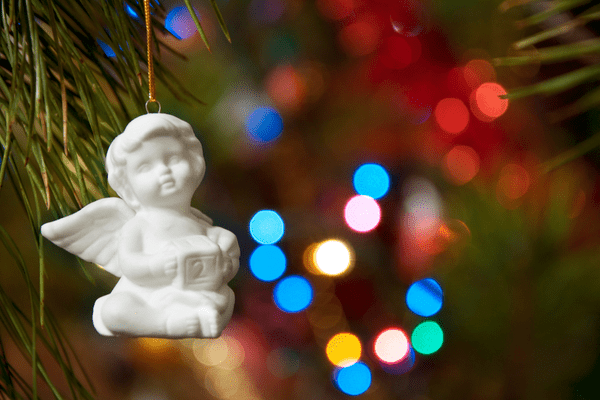
Angels play crucial roles in the biblical accounts of Jesus’ birth. The Angel Gabriel announced to Mary that she would conceive a child, and angels heralded Jesus’ birth to the shepherds, bringing tidings of joy.
Because of these roles, angels are often included in Nativity scenes and are popularly placed on top of Christmas trees, to symbolize the message of hope and joy they brought.
Many Christmas carols and songs feature angels, emphasizing their importance in the holiday narrative. Their presence in Christmas celebrations highlights themes of divine intervention, joy, and the heralding of significant news.
5. Candy Canes
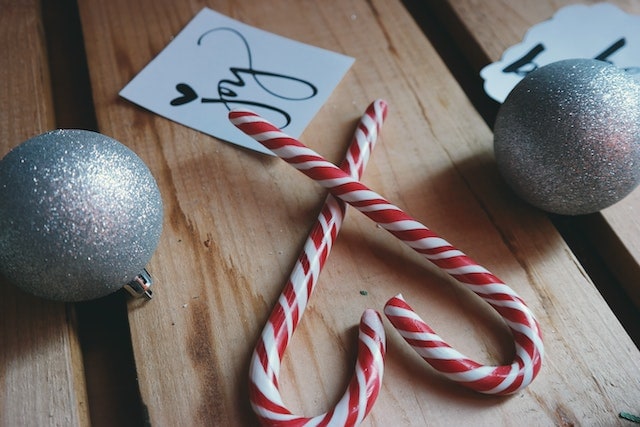
The origin of candy canes is rather murky, but according to one popular tale, they were shaped like shepherd’s crooks, representing the shepherds who visited baby Jesus. The red and white stripes have been interpreted in various ways. Some believe the white represents purity and the red symbolizes the blood of Christ.
Over time, candy canes have become more associated with festive cheer and the joy of gift-giving rather than solely their religious associations. Today, they’re a staple in Christmas decorations and treats. They’re enjoyed by many for their peppermint flavor and iconic twist, making them a recognizable symbol of the holiday season.
6. Christmas Wreath
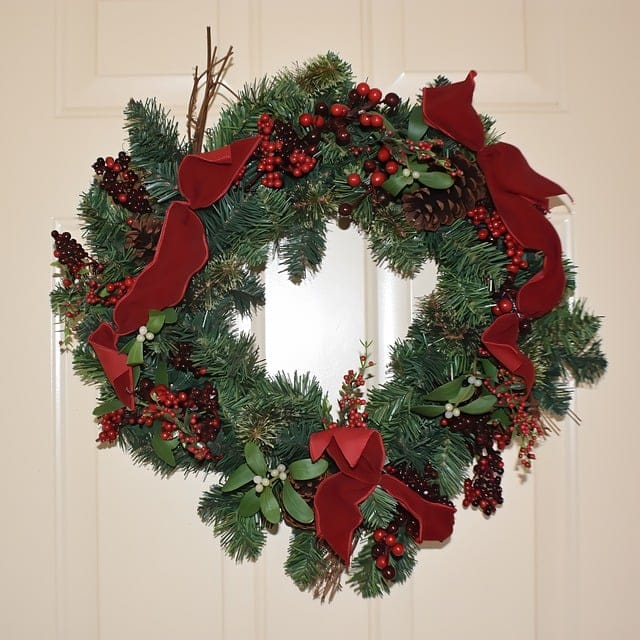
Originating from ancient European pagan traditions, wreaths were made of evergreen branches, symbolizing strength and perseverance through the winter. With the spread of Christianity, the wreath was adopted as a symbol of Christmas.
Its circular shape represents eternity and the never-ending love of God. The evergreens came to symbolize eternal life and Christ’s victory over death. Often decorated with ornaments, ribbons, or lights, Christmas wreaths are commonly placed on doors as a sign of welcome during the festive season. Their presence each year serves as a reminder of hope, continuity, and the cycle of seasons.
7. Mistletoe

Mistletoe holds a special place in Christmas traditions, especially as a symbol of love and friendship. Its roots as a festive symbol go back to ancient Druids who valued it for its winter vitality. They believed it brought luck and warded off evil spirits.
However, it’s best known for the custom of kissing beneath it. This tradition has origins in Norse mythology, where it’s associated with the goddess of love. Over time, it became incorporated into Christmas festivities. When two people stand beneath a sprig of mistletoe, they’re encouraged to share a kiss, adding a touch of romance and goodwill to the holiday season.
8. Bells
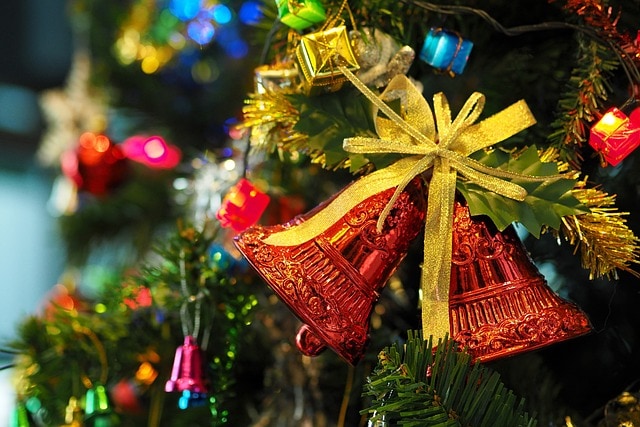
Traditionally, on Christmas Eve, churches used bells to signal the beginning of the service, to let the people know it was time to celebrate Jesus’ birth. Bells also connect to the tale of the Magi, symbolizing their announcement to visit baby Jesus.
As years passed, the ringing of bells became a recognized sound of the holidays. Now, they’re a key element in Christmas music, decor, and images of sleighs, capturing the festive spirit and joy of Christmas announcements and celebrations.
9. Santa Claus
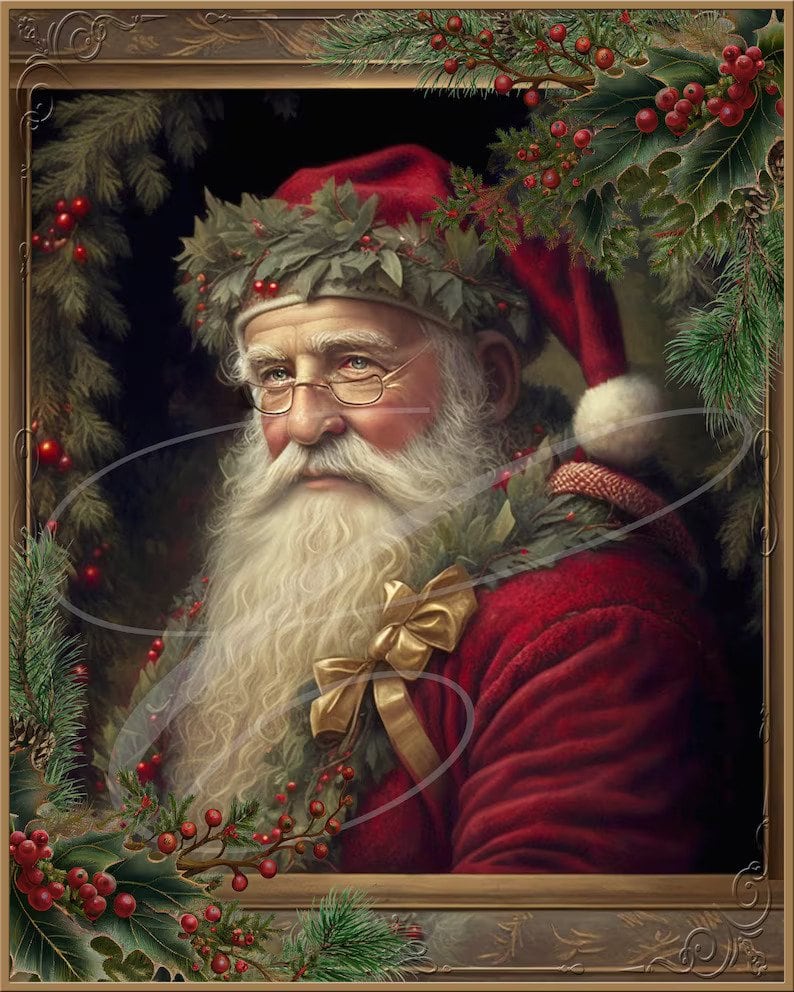
Santa Claus, a symbol of generosity and festive cheer, is deeply rooted in Christmas traditions. His story begins with Saint Nicholas of Myra, a 4th-century bishop who was known for his kindness and the secret gifting of coins.
Over centuries, legends of Saint Nicholas merged with other cultural tales. They evolved into the figure of Father Christmas in England and Sinterklaas in the Netherlands. When Dutch immigrants settled in the U.S., “Sinterklaas” became “Santa Claus.”
His popularity soared in the 19th century, thanks to stories and illustrations portraying him as a jolly, rotund figure delivering gifts from the North Pole. Today, Santa Claus symbolizes the spirit of giving and magic, making him a central figure of Christmas celebrations worldwide.
10. Reindeer
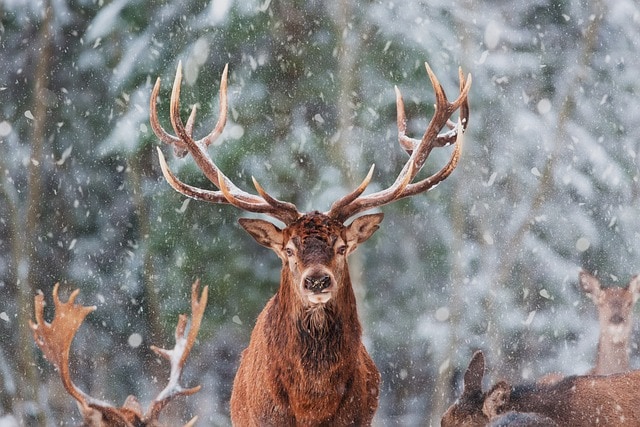
The connection between reindeer and Christmas largely stems from the 1823 poem “A Visit from St. Nicholas”. It was commonly known as “The Night Before Christmas,” which introduced eight flying reindeer pulling Santa’s sleigh.
Later, in 1939, the character Rudolph, the red-nosed reindeer, was introduced in a promotional booklet by Montgomery Ward and became an instant hit. Reindeer, native to cold climates, were ideal symbols for the wintry backdrop of Christmas. Their imagery evokes feelings of magic, wonder, and the incredible journey Santa undertakes to deliver gifts around the world.
Today, they’re a festive staple, found in stories, songs, and decorations, adding to the magic and mystique of the holiday season.
11. Poinsettias
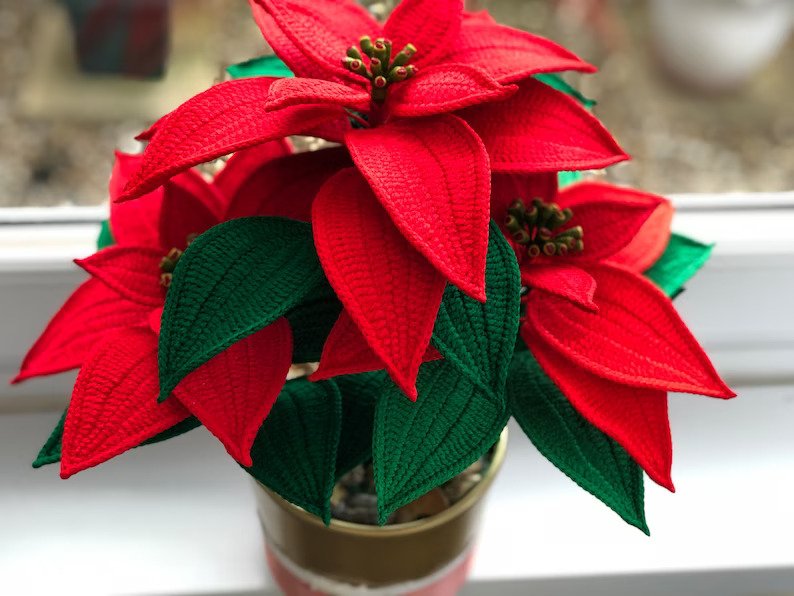
Native to Mexico, poinsettias are often called the “Christmas Star” because of their star-shaped leaves. Legend says a poor Mexican child, with no gift for the baby Jesus at Christmas Eve services, offered weeds that miraculously turned into bright red poinsettias. This symbolized the idea that any gift, given with love, is valuable.
The bright red color also reminds many of the sacrifice of Jesus. Joel Poinsett, the first U.S. ambassador to Mexico in the 1820s, introduced them to the U.S. Since then, they’ve become a holiday staple. Now, poinsettias are popular decorations worldwide during the festive season, brightening homes and churches with their seasonal color.
12. Holly
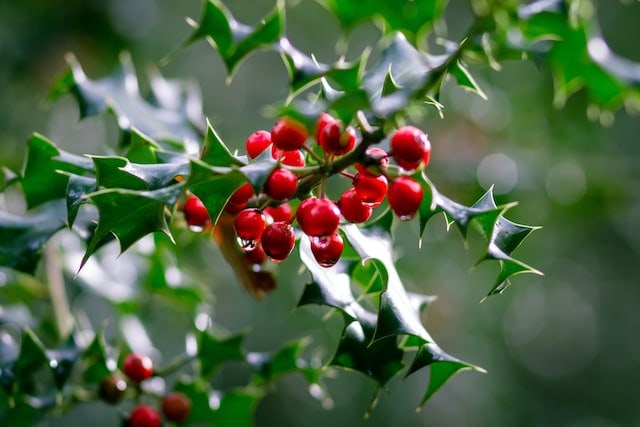
The evergreen leaves and bright red berries of holly have long been associated with the winter season. In ancient times, many believed holly warded off evil spirits and brought good luck.
With the spread of Christianity, holly took on new significance. The prickly leaves came to represent the crown of thorns Jesus wore, and the red berries symbolized his blood. Thus, holly became a symbol of Jesus’ sacrifice. The fact that holly remains green throughout winter also symbolizes eternal life.
Today, holly is a common festive decoration, adorning homes and greeting cards. It’s pagan and Christian origins are blended and it reminds us of the deeper meanings of the Christmas season.
13. Yule Log
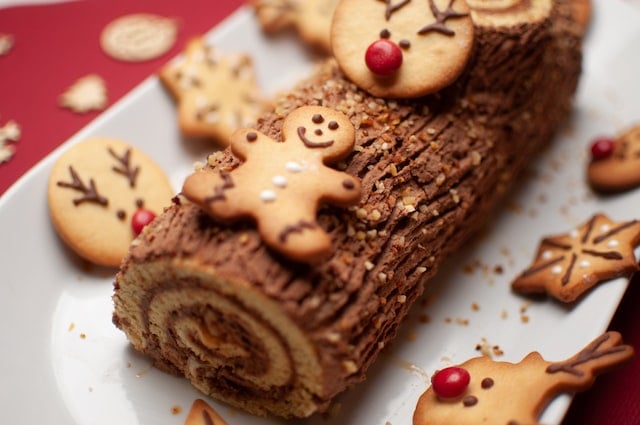
The Yule log is a Christmas tradition that originated in Europe, especially Scandinavia, during winter celebrations. Back then, a big log was chosen and ceremoniously brought indoors to keep warm against winter’s chill.
When Christianity spread in these regions, this old custom was blended into Christmas celebrations. The log came to symbolize the warmth and hope Jesus represents. On Christmas Eve, it was lit and would burn for the next twelve days.
In modern times, many no longer follow the tradition of burning an actual log. Instead, its legacy is celebrated in a different, tasty way. A popular dessert, the “Bûche de Noël,” which looks like a log, reminds people of this ancient tradition and is enjoyed by many during the holiday season.
14. Christmas Crackers
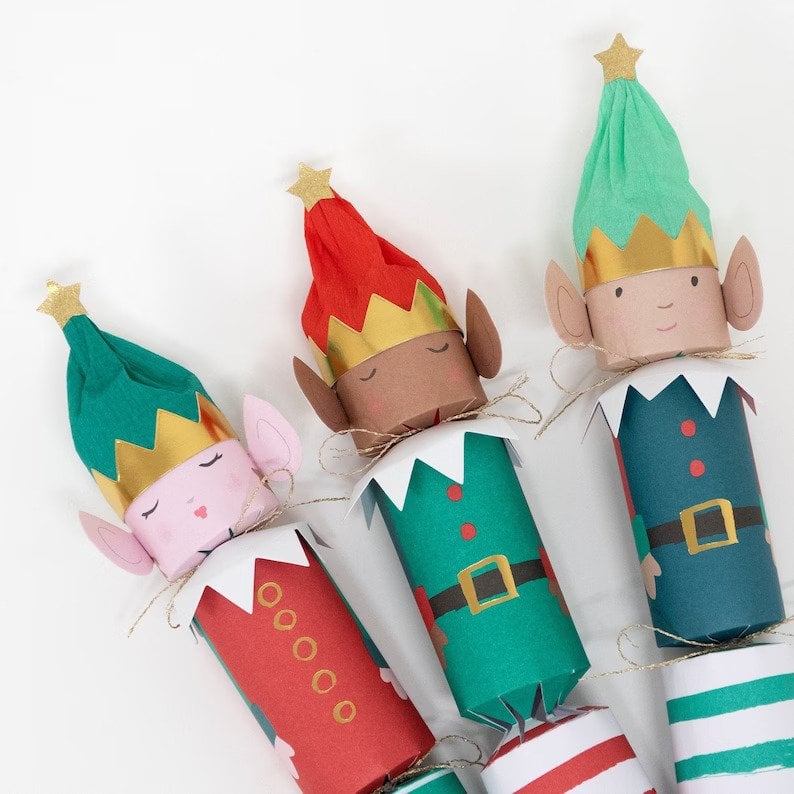
Christmas candles have deep ties to the holiday, symbolizing light in the darkness and the presence of Jesus. They’re often referred to as the “Light of the World.” Historically, during the winter solstice, many cultures lit candles to brighten the longest night of the year and to pray for the return of longer days.
As Christianity spread, this tradition was incorporated into Christmas celebrations, reflecting the arrival of Jesus bringing spiritual light into the world. Candles also have practical roots; before electricity, they were necessary for Midnight Mass and festive evening gatherings.
15. Christmas Candles
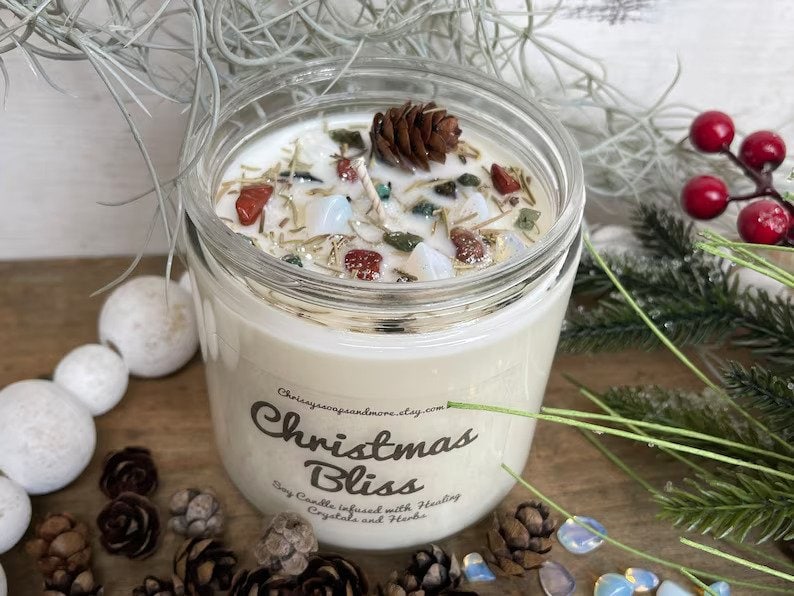
Christmas candles originally showed hope and light during long, dark winters. Before Christianity, candles were lit during the winter solstice, celebrating the sun’s return. Later, these candles began representing the light of Jesus.
In many cultures, people light a candle on Christmas Eve, believing that it helps Mary and Joseph to find their way. Additionally, the Advent wreath, common in Christian traditions, holds four candles representing the four weeks of Advent: their progressive lighting counts down to Christmas.
Today, even if these religious traditions aren’t followed, many still use candles in their Christmas decorations. They give a cozy feel, make rooms glow, and remind us of the holiday’s warmth and magic.
Wrapping Up
Symbols of Christmas are deeply rooted in history, blending ancient traditions with spiritual meanings. From the glowing Christmas candles to the vibrant poinsettias, each symbol brings its unique story, enriching our celebrations.
Related articles
25 Symbols of 4th of July and What They Really Mean
15 Important Thanksgiving Symbols and What They Mean
9 Halloween Symbols and Why They Represent the Holiday
20 Important Symbols of Ramadan
25 Symbols of Holidays that Will Get You in the Holiday Spirit





